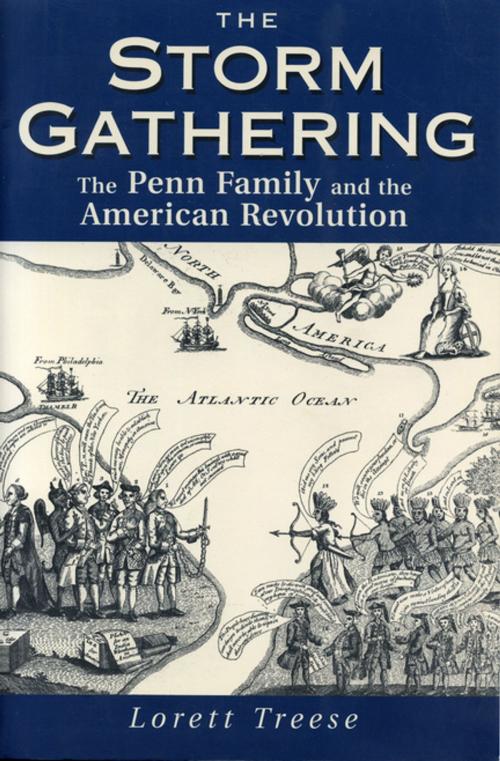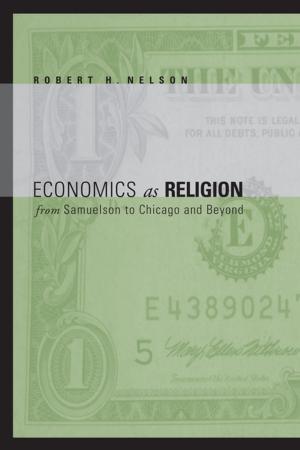The Storm Gathering
The Penn Family and the American Revolution
Nonfiction, History, Revolutionary, Military, Other, Americas, United States| Author: | Lorett Treese | ISBN: | 9780271038568 |
| Publisher: | Penn State University Press | Publication: | November 20, 1992 |
| Imprint: | Penn State University Press | Language: | English |
| Author: | Lorett Treese |
| ISBN: | 9780271038568 |
| Publisher: | Penn State University Press |
| Publication: | November 20, 1992 |
| Imprint: | Penn State University Press |
| Language: | English |
Treese's book provides a popular history of Pennsylvania during the Revolutionary period from the vantage point of the heirs of William Penn.
Most Pennsylvanians are familiar with the story of William Penn and the founding of Pennsylvania in 1681 as a haven for religious dissenters. But few may know what became of Penn's enterprise (the "proprietorship") in the years after his death in 1718. And fewer still may realize that Penn's descendants played an important, and increasingly unpopular, role in the coming of the American Revolution to Pennsylvania. The Storm Gathering, based on Penn family correspondence and other contemporary records, tells this fascinating story, focusing primarily on Thomas and John Penn, two of the last members of the Penn family to figure significantly in Pennsylvania's affairs before the colonies declared independence in 1776.
Lorett Treese begins her story with Thomas Penn, William Penn's son who eventually became chief proprietor. Thomas groomed his nephew John (sometimes called "indolent") to be governor of the colony. When John took up his duties in 1763, at the end of the French and Indian War, the Penn proprietorship faced serious problems in managing Pennsylvania. The sheer size of the colony made it difficult for the Penns to collect their rents, and settlers moving westward clashed with Indians on the frontier, threatening the peaceful relationship that William Penn had established with native peoples. A stubborn legislature resisted Penn family control at nearly every turn, and Ben Franklin led an effort to thwart the Penns and make Pennsylvania a royal colony.
According to Treese, these domestic problems diverted the Penns' attention from the growing movement in America toward democracy and independence. But by 1768, after the British parliament had passed the Townshend Act taxing the American colonies, John Penn and his uncle Thomas began to realize the magnitude of their troubles, referring to the growing rift between America and Britain as "the Storm gathering."
Events began to overtake the Penns by 1775. In that year Thomas Penn died, and the bloodshed at Lexington and Concord brought war closer. In Pennsylvania, John Penn wrote that "The people here are forming themselves into companies & are daily exercising in order to be prepared for the worst." When the Second Continental Congress met in Philadelphia that summer, John knew that the end of Penn leadership was near. "Our form of government still continues," he wrote, "but I think it cannot last long . . . ." In 1776, as radical sentiment grew, the colonies declared independence from England, and Pennsylvania rewrote its constitution, divesting the Penn family of governing powers and making the colony a commonwealth. When war broke out, radical patriots forced John Penn into exile, and he eventually retired to his country home where he waited out the war.
Treese concludes this engaging story with the end of the Revolution and its aftermath. While Pennsylvanians began the difficult work of reconstructing their government, the Penns attempted to salvage their personal fortunes. Many former officers of the Penn establishment participated again in government, but Penn family members were pushed outside of American government.
Treese's book provides a popular history of Pennsylvania during the Revolutionary period from the vantage point of the heirs of William Penn.
Most Pennsylvanians are familiar with the story of William Penn and the founding of Pennsylvania in 1681 as a haven for religious dissenters. But few may know what became of Penn's enterprise (the "proprietorship") in the years after his death in 1718. And fewer still may realize that Penn's descendants played an important, and increasingly unpopular, role in the coming of the American Revolution to Pennsylvania. The Storm Gathering, based on Penn family correspondence and other contemporary records, tells this fascinating story, focusing primarily on Thomas and John Penn, two of the last members of the Penn family to figure significantly in Pennsylvania's affairs before the colonies declared independence in 1776.
Lorett Treese begins her story with Thomas Penn, William Penn's son who eventually became chief proprietor. Thomas groomed his nephew John (sometimes called "indolent") to be governor of the colony. When John took up his duties in 1763, at the end of the French and Indian War, the Penn proprietorship faced serious problems in managing Pennsylvania. The sheer size of the colony made it difficult for the Penns to collect their rents, and settlers moving westward clashed with Indians on the frontier, threatening the peaceful relationship that William Penn had established with native peoples. A stubborn legislature resisted Penn family control at nearly every turn, and Ben Franklin led an effort to thwart the Penns and make Pennsylvania a royal colony.
According to Treese, these domestic problems diverted the Penns' attention from the growing movement in America toward democracy and independence. But by 1768, after the British parliament had passed the Townshend Act taxing the American colonies, John Penn and his uncle Thomas began to realize the magnitude of their troubles, referring to the growing rift between America and Britain as "the Storm gathering."
Events began to overtake the Penns by 1775. In that year Thomas Penn died, and the bloodshed at Lexington and Concord brought war closer. In Pennsylvania, John Penn wrote that "The people here are forming themselves into companies & are daily exercising in order to be prepared for the worst." When the Second Continental Congress met in Philadelphia that summer, John knew that the end of Penn leadership was near. "Our form of government still continues," he wrote, "but I think it cannot last long . . . ." In 1776, as radical sentiment grew, the colonies declared independence from England, and Pennsylvania rewrote its constitution, divesting the Penn family of governing powers and making the colony a commonwealth. When war broke out, radical patriots forced John Penn into exile, and he eventually retired to his country home where he waited out the war.
Treese concludes this engaging story with the end of the Revolution and its aftermath. While Pennsylvanians began the difficult work of reconstructing their government, the Penns attempted to salvage their personal fortunes. Many former officers of the Penn establishment participated again in government, but Penn family members were pushed outside of American government.















